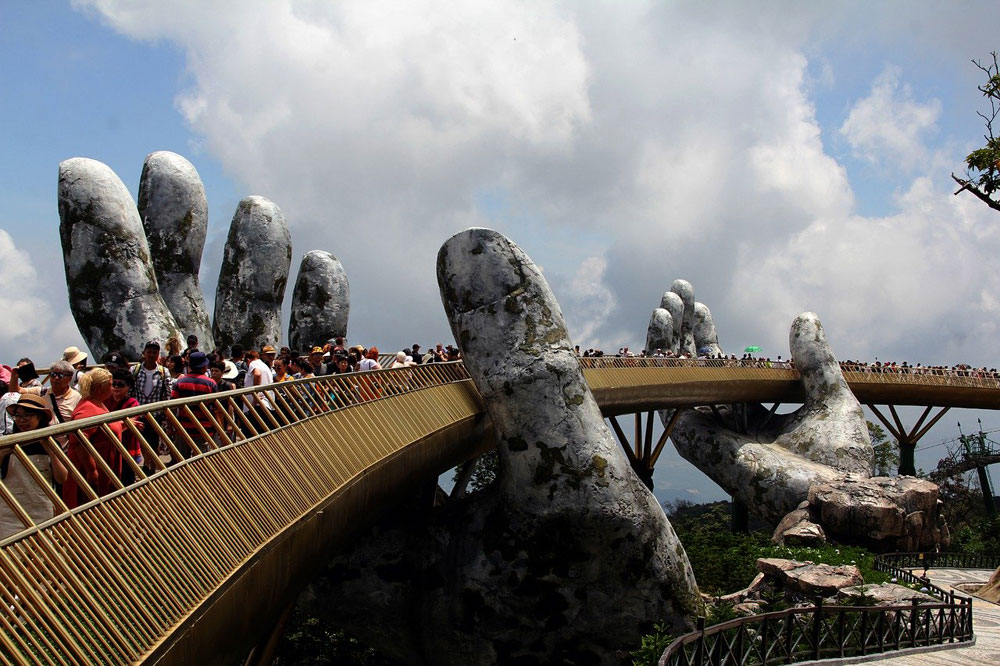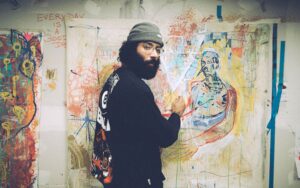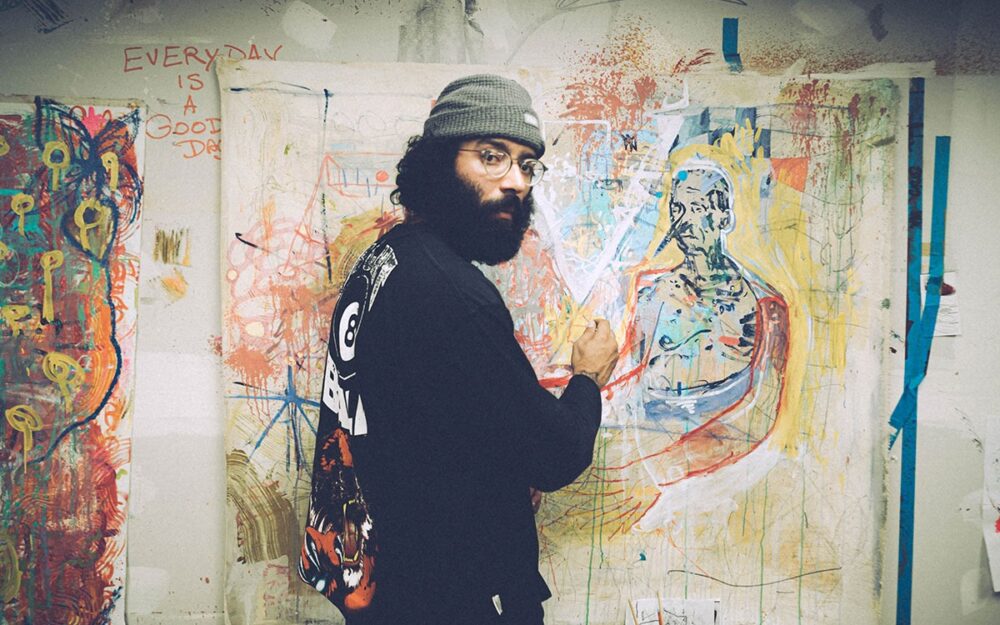
Today, we republish john a. powell’s article from the winter 2019 edition of the Nonprofit Quarterly, “Bridging or Breaking? The Stories We Tell Will Create the Future We Inhabit.” In it, he exhorts us to move past inclusion to belonging—the difference being that in belonging you have the power to cocreate the thing to which you belong.
This has huge implications for the way justice work is funded today, including racial justice, which for the most part is done without attention to power, which includes the power to cocreate. Powell asserts that it is exactly this cocreation that white nationalists reject. But there are many our sector who reject it as well. And he warns, “Our existing institutions and story will not carry us to the future we want.”
For powell, while policy is important, “the essence of the struggle is about who we are,” and funders “should be funding work to help people exercise this muscle.” Imagine spaces into which we can step to engage the challenges of cocreation?—Cyndi Suarez, Editor in Chief
We are experiencing a time of deep uncertainty and change. Both the depth and speed of change are creating growing anxiety in our accepted norms, in our political institutions, and in our very sense of self. These changes are reflected in five critical, interrelated areas: climate change, globalization, technology, the economy, and migration. We don’t always appreciate the interconnection of these forces; indeed, we often try to deal with them separately. This is not only a mistake but also means that many of our efforts are inadequate and ineffective.
The rate and intensity of the change threaten to outpace our ability to adapt. This is widely experienced as stress and anxiety.
These forces are happening in virtually all parts of the world. Even our language and ideas are often inadequate to understand and develop appropriate responses to these changes. The stories we collectively hold are an important part of how we respond, and will help determine whether our responses will be up to the task. Leaders play an oversized role in helping to give energy and meaning to the stories we tell ourselves and each other. This impacts not just how we see the world but also our actions in the world.
So we need to interrogate the stories we have and identify what might be the most productive and life-affirming story that we can inhabit. And we need to find some ways to get there.
I hope it is clear that by “story” I am not suggesting a simple fiction—or that we can, in a facile way, just choose one story over another. Of course, we can sometimes choose, but our choices are often limited. Indeed, we are not fully transparent, even to ourselves.
That is just one lesson of the role structures play. We are often blind to the presence and impact of structures on lives and decisions. And one of the insights of cognitive science is that many of our intentions are implicit, meaning we are not consciously aware of what we are doing and why. We are not helpless, but we need to understand what we are facing and become more aware of some of our options moving forward.
We the People
How should we respond to this heightened change and stress? First, we need to have clarity. While most people recognize that we face in our communities a growing disquiet, they would not agree on what it is, nor on what is causing it.
Where to begin? One fruitful place, I believe, is to examine our plight through the frame of belonging. Every society, every group, addresses the question of who belongs and what belonging means or what it is we belong to. Despite the ubiquity of these questions, they are seldom explicit; they are more likely to be background assumptions that seem normal, natural, and stable. But during rapid change, these questions and assertions are much more likely to surface. Yet the tools and skills needed to deeply engage them, even as they become more salient, are too often lacking. I have already suggested here, and in other writings, that these issues will likely grow in intensity.1
It is not surprising that the Constitution of the United States starts off with the issue of addressing who belongs: “We the people.” And while most people in the land that was to become the United States of America were not included in that we, in many ways the history of the country has been about continuing to both address and define who is in the we.
To be in the we was to belong—and therefore participate in creating the society and in creating the meaning that was attached to that belonging. Being outside the we was to be othered: without the recognized right to participate in the constitution of the country, to give meaning, and in many cases even be seen as fully human. The country’s relationship with indigenous nations, women, and enslaved people from Africa was very much bound up with the issue of who was in the we. It still is. In Dred Scott, one of the most important and infamous Supreme Court cases, the Court took on the question of whether Black people, enslaved or not, could be considered part of the we. Chief Justice Roger B. Taney answered for the Court, and therefore the country, with an emphatic no. In one of the most famous political speeches in U.S. history, Abraham Lincoln called on the country to reject this narrow we and write a new story, with a new birth of freedom.
Out of these various struggles came a redefinition of who could be in the we. The Fourteenth Amendment, passed shortly after the Civil War, rejected Taney and asserted that all people born in the United States were citizens.
This assertion of being part of the we, of belonging, is now being challenged again, by Trump and many of his supporters. The struggle of who belongs—and who can be part of the we—continues. And, in this country, that struggle has always had a relationship of white dominance attached to it. These questions have been and continue to be foundational for our country and, indeed, the world.
This same impulse is showing up in Europe, Asia, and Africa: Who is really British? Can Muslims belong in India? The threat of the other is met by some with a call for a small religious or ethnic we, but the same foundational question remains of belonging. To not belong is to be othered. To be less than. To be, as W. E. B. Dubois said, a “problem.”
To belong is not just to be a citizen or member in the weakest sense, but to be able to participate in cocreating the thing you belong to. This makes it different than inclusion. This is exactly what many white nationalists reject. Samuel Huntington argued that we are not a country of immigrants or native peoples, but a settler country.2 The rules, the norms, the culture are set by the settlers, and everyone else does not get to influence or change the norms. For the white nationalists, those norms include whiteness and what they associate with whiteness. They believe they get to decide because they are the we. It is a small closed we that does not want to be threatened by the other.
What we’re witnessing around the world today with othering is the result of nuanced and long processes. And part of those processes is anxiety. Yet anxiety does not have to turn into loss and fear. While we are all exposed to the rapid changes in the world, some are turning to fear and even hate, while others look at opportunity and even love. We need the latter instead of the former.
This brings us to the issue of bridging and breaking, and the stories that we live by, and how to promote belonging or othering. While rapid change may be an adequate explanation for our increased anxiety, it does not by itself explain the deep polarization and fear that are sweeping the world. Natural anxiety and stress can become either productive or hateful. Our possible responses are largely influenced by the stories we inhabit. There is robust research that shows that when Americans, particularly white Americans, hear that we are moving toward a country where white will not be the majority, it pushes them to the right—and this is true even for liberal whites. This research is based on peoples’ unconscious reactions. The conscious response is much more positive, especially from liberals.
The anxiety triggered by change does not just impact whites; it affects all people and, indeed, our living earth. Some will see the rise of white nationalism, supremacy, nativism, and other dominant ideologies as always having been there, just not with the space and permission to be expressed openly. But this is not likely the case. The kinds of changes we are discussing create a new set of responses and new stresses. And as we experience this anxiety, we will not, on our own, be able to figure out how to respond to it or even know what it is. We will need a story—a story that will help us name both the underlying anxiety as well as our appropriate reactions; it will give voice and shape to the anxiety.
There are two main types of stories that get used. One is a breaking story and the other is a bridging story.
Sign up for our free newsletters
Subscribe to NPQ's newsletters to have our top stories delivered directly to your inbox.
By signing up, you agree to our privacy policy and terms of use, and to receive messages from NPQ and our partners.
Breaking
And while I am focusing on stories, we should address practices as well. What ethnic nationalist leaders like Trump in the United States and Modi in India talk about is the world being scary and in decline because of the other. They might describe the other as insects, an invasion, a wave. The point to raise in such stories is that the other represents a threat. That threat might include an economic aspect, but it is likely to speak to a more profound threat. A threat to one’s very existence. Think of the Proud Boys in Charlottesville chanting “Jews will not replace us!” The perceived threat does not have to be real, but the anxiety and fear are likely to be. And the true threat in such cases is to the existence of the targeted group. This is the drumbeat of the far right. This is quintessential breaking. And once the environment is created, it is possible to pass discriminatory and hateful policies directed at those targeted groups.
There are several things to notice. One is that there is an anxiety that is turned into a fear about the future. This fear is attached to the undeserving other. There is also a romanticizing of some mythical past, and a claim that we will restore or return to that era. The future is scary, so let’s reject the future in favor of a past that never really was and certainly never will be. What I am describing is hard breaking—which is the inclination to deny the humanity of others, and see them as a problem and a threat—and it can lead to placing children in cages, building walls, or even genocide.
Many will associate hard breaking with authoritarianism and ethnic populism. As people experience anxiety about change and the other, the ethnonationalist is likely to flirt with purity and cleansing, as the other is seen as not capable of being part of the we. Historian Ibram Kendi makes the point that hard segregationists are often in this space.3
It is also important to note that there is no natural other. The other is largely constructed by the stories we tell. While for thousands of years people lived in small tribes, these tribes were not like races or religions of today.
There are also forms of soft breaking. This is likely to be the kind of breaking that occurs within liberal spaces. It might entail not being willing to listen to others’ stories—or assigning groups a role where they are not able to fully participate. The position of allyship, which at certain times may be appropriate, can also become a type of soft breaking. In this type of soft breaking, it may be suggested that friendly others called allies are in a permanent state of being outside, and that at best they are just junior partners, whose stories and concerns are not our main concern. The role they are assigned, then, is of being there only to provide support, and not really to be part of the central we.
The vast majority of stories and practices today are either hard or soft breaking. The liberal response to this othering too often engages in what I call same-ing, while the response from the far right is to try and retreat into a static and pure past. The liberal response is that the other who is being demonized for all the changes is just like us, and therefore no real change is necessary. This claim often seems hollow. Many people do not experience the other as just like them. Should we expect or want the country to stay the same as it becomes more diverse? Are our histories and experiences all the same? So, while the far right are likely to see Black, Brown, Asian, or nonheterosexual people as an existential threat, liberals may argue that we are all the same. Both positions are problematic—and wrong.
The liberal position has too often been afraid of difference and therefore is constantly looking for something that will erase any difference—like a focus on economics without questions of identity attached to it. The far right is likely to see only identity as the key issue.
One can have a position that recognizes economic concerns together with concerns that are associated with identity. An existential threat cannot be reduced to just material things.
As economist and philosopher Amartya Sen noted, when a group is attached to some characteristic, such as poverty or crime, their identity is likely to become more salient.4 It is not identity that is the problem; the problem is breaking.
Bridging
The intervention for othering is not same-ing, but belonging. Belonging is based on the recognition of our full humanity without having to become something different or pretend we’re all the same. We are always both the same (humanity) and different (human), and are also multiple and dynamic, constantly renegotiating who we are.
Belonging requires both agency and power to cocreate. But true belonging means we are not just creating for our group(s), but for all. One of the major ways of promoting belonging is by bridging. Bridging requires that we create space to hear and see each other. It does not require agreement. As the neuroscientist Robert Sapolsky states, we recognize each other by recognizing our respective sacred symbols.5 Bridging is about creating compassionate space and practices where we can acknowledge each other’s stories and suffering. We have to construct stories that allow space for others. Our story cannot just be about us in the narrowest way, nor can it reproduce othering by consigning an other to be just a villain in our story. At a deeper level, bridging is about co-constructing a larger we, with shifting differences and similarities. Through bridging, people experience being heard, being seen, and being cared for.
There are a couple of key things related to bridging. As my friend—cultural critic, author, and feminist—bell hooks and I have spoken about, bridges are made to be walked on. This means that the folks who bridge are likely to be challenged—not just by the others who oppose them but also by their own group. Some will insist that marginalized people should not have to bridge, as that is putting too much on them. And yet they may practice soft breaking, which also promotes a small we. I would not insist that any group bridge, but we should understand what the alternative is.
The question is often presented: Do I have to bridge with my enemy, with Trump, with Trump voters, with racists, with the devil? My response is to start with short bridges. Maybe that is your family, a group you have something in common with but where you need to practice more listening, more acknowledgment of their suffering, more understanding of what you share—not what divides you. As we get more practice, we can explore long bridges. But I also caution against assuming someone is the devil.
There are many things that I have not addressed here, such as bonding with your own group without hating a perceived other. There is also the question of power and institutional gaps. This is leaned into by linking bridging with explicit power building, although bridging by itself can also be a very effective way of building power.
There is also the issue of the level at which the bridging is taking place. Is it between individuals, groups, institutions, or something else? This will matter in how bridging is done. There is also the issue of trust. What is the right level of trust for bridging to work?
What I would say to people in philanthropy—and in movement building and civic engagement as well—is that while policies are important, the essence of the struggle is about who we are. For funders, you should be funding work to help people exercise this muscle. Don’t only fund separate issues or separate groups.
Given that change is happening across so many domains, some may ask, Why focus on identity and othering, and not technology or climate? But this is a dynamic that is already changing. Young people are not only leading the way with a focus on climate but have much more inclusive acceptance and new understandings of difference and identities, including gender and neurodiversity. But part of the answer to the question above is about the stories we are fed. It’s not that corporations or elites refuse to engage with the environment—it’s that prioritizing our earth as part of our shared story would make their story of unchecked greed and building separate wes harder to sell. It may be more satisfying and expedient to blame a person instead of nature.
What we need instead is a compelling story that shows how all these issues are related. Can we imagine a world where we all belong and can all participate? Or are we consigned to a world of small, warring wes? Those who share the vision of a world of belonging must focus on a new story. Our existing institutions and story will not carry us to the future we want. There may be more questions and there is a lot to learn and do. The pace of change will not slow down. Let’s get on with it.
For more information on bridging and breaking, see popular education tools that the Othering & Belonging Institute at UC Berkeley (formerly the Haas Institute for a Fair and Inclusive Society) has developed, including an animated explainer video and curricular modules designed for a variety of audiences. You can also follow the Othering & Belonging Institute on Twitter.
Notes
- See, for instance, john a. powell, “Us vs them: the sinister techniques of ‘Othering’—and how to avoid them,” Guardian, November 8, 2017.
- Samuel P. Huntington, Who Are We? The Challenges to America’s National Identity (New York: Simon & Schuster, 2004).
- See Ibram X. Kendi, Stamped from the Beginning: The Definitive History of Racist Ideas in America (New York: Nation Books, 2016); and Ibram X. Kendi, How to Be an Antiracist (New York: One World, 2019).
- Amartya Sen, Identity and Violence: The Illusion of Destiny (New York: W. W. Norton & Company, 2006).
- Robert M. Sapolsky, Behave: The Biology of Humans at Our Best and Worst (New York: Penguin Press, 2017).













